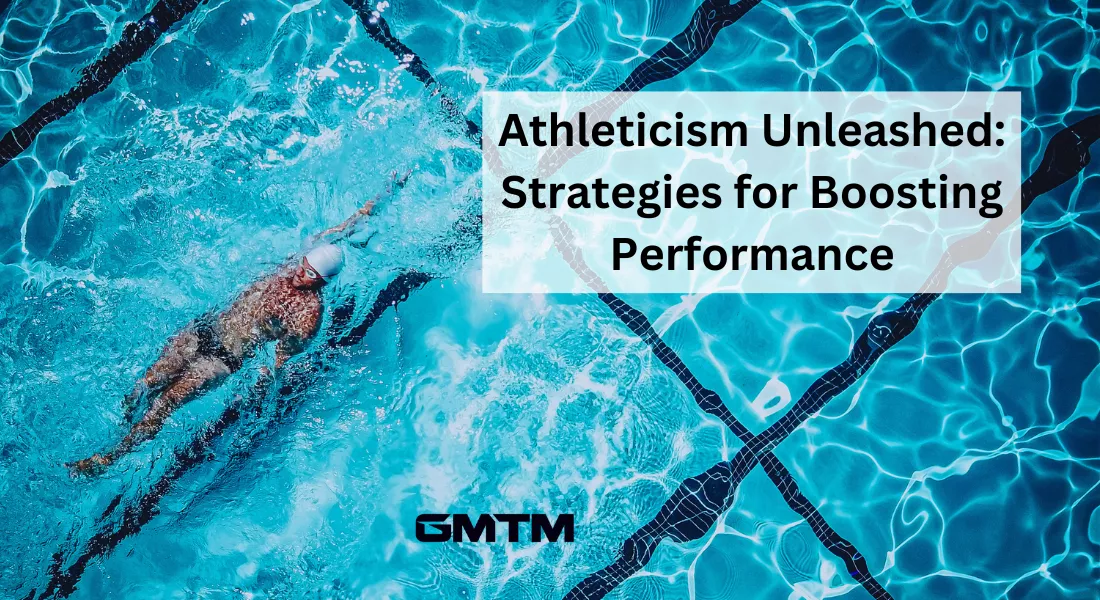Have you ever wondered how quickly your brain can react to a stimulus? Reaction time is a crucial aspect of human performance, influencing everything from everyday tasks to high-pressure situations. In this article, we will explore the science behind reaction time, discuss the importance of testing it, delve into different types of reaction time tests, and provide practical tips on how to improve your reaction time.
Whether you're an athlete looking for that extra edge or simply curious about cognitive abilities, understanding and honing your reaction time can have significant benefits in various aspects of life.
The Science Behind Reaction Time
Reaction time refers to the period it takes for an individual to respond to a stimulus. It is a crucial measure in various fields, including sports, medicine, and transportation. Reaction time tests are commonly used to assess an individual's cognitive and motor skills by measuring their ability to react promptly and accurately. Reaction time tests typically involve presenting a stimulus and recording the time it takes for the person to respond.
The measurement of reaction time involves several factors that can impact its duration. One such factor is age; older individuals generally have longer reaction times compared to younger ones due to natural changes in cognitive processing speed. Other factors include fatigue, distractions, alcohol or drug consumption, and specific medical conditions affecting neural pathways. Moreover, different types of stimuli can also influence reaction time as they may require varying levels of attention or motor response.
What is reaction time?
Reaction time refers to the speed at which an individual responds to a stimulus. It is a measure of how quickly the brain processes information and initiates a response. Reaction time plays a crucial role in various activities, from sports performance to driving safety. Tests for reaction time are designed to measure different types of reactions, including simple reactions where individuals respond to one stimulus, and choice reactions where they must choose between multiple stimuli. These tests provide valuable insights into cognitive processing speed and can help identify areas that may need improvement or further training.
How is reaction time measured?
There are various methods used to measure reaction time. One common method is the simple reaction time test, where individuals are instructed to respond as quickly as possible to a single stimulus. Another method is the choice reaction time test, which requires individuals to react to different stimuli and make corresponding choices.
In a simple reaction time test, participants are presented with a single stimulus and required to respond promptly. The duration between the presentation of the stimulus and their response is measured as their reaction time. This type of test provides insights into basic cognitive processing speed.
Choice reaction time tests involve multiple stimuli and require individuals to choose the appropriate response for each stimulus presented. These tests assess not only processing speed but also decision-making abilities under pressure. By measuring how long it takes for someone to select the correct option, researchers can gain valuable information about an individual's ability to make quick and accurate decisions in real-world situations.
Factors that affect reaction time
Age and experience significantly impact reaction time. As individuals age, their reaction speed tends to decrease due to neurological changes in the brain. However, with practice and experience, reaction time can be improved. Regularly engaging in activities that require quick responses can help train the brain to react faster. Additionally, external factors such as distractions or fatigue can also affect reaction time by diverting attention away from the stimulus.
The Importance of Testing Reaction Time
Testing reaction time is crucial for a variety of reasons. By detecting cognitive impairments, such as attention deficits or processing speed issues, these tests can help identify potential underlying health conditions that may require further evaluation and treatment. Moreover, assessing reaction time can also play a significant role in improving athletic performance by identifying areas for improvement and enhancing overall coordination and agility. Additionally, testing reaction time is essential in promoting driving safety as it allows individuals to understand their ability to respond quickly to unexpected situations on the road, potentially preventing accidents.
Detecting cognitive impairments
Identifying early signs of neurodegenerative diseases is crucial in detecting cognitive impairments. By administering a series of clinical tests that evaluate memory, attention, and problem-solving skills, healthcare professionals can identify subtle changes that may indicate the onset of conditions like Alzheimer's or Parkinson's disease.
Evaluating the impact of medication on reaction time provides valuable insights into cognitive impairments. Through controlled experiments and measurements, researchers can determine how specific medications affect an individual's ability to react quickly and make decisions effectively. This information aids in optimizing treatment plans for patients with cognitive disorders.
Assessing the effects of aging on cognitive function allows us to understand how our mental abilities change over time. By using standardized assessments that measure memory, processing speed, and language skills, we gain valuable knowledge about age-related cognitive decline. These findings help develop strategies to maintain brain health as we grow older.
Improving athletic performance
Measuring response time is crucial in enhancing athletic performance. By conducting tests for reaction time, trainers can gather valuable data that helps them optimize training methods and improve overall performance. Tracking progress and analyzing techniques specific to each sport allows athletes to identify areas for improvement in agility and reflexes, leading to enhanced athletic abilities.
- Tests for reaction time provide valuable insights into an athlete's cognitive abilities.
- Measuring response time helps trainers tailor training methods for better results.
- Tracking progress and optimizing techniques can lead to improved agility and reflexes.
- Identifying areas for improvement enhances overall athletic performance.
Enhancing safety
Assessing alertness and responsiveness behind the wheel is crucial for enhancing driving safety. By conducting tests for reaction time, we can determine a driver's ability to quickly respond to various road situations. This helps identify any potential cognitive impairments that may hinder their performance while driving.
Determining impairment due to alcohol or drugs before getting behind the wheel is another essential aspect of enhancing driving safety. Through comprehensive testing methods, such as breathalyzers and drug screening, we can accurately assess if a driver is under the influence. This proactive approach prevents impaired individuals from endangering themselves and others on the road.
Evaluating distraction levels caused by mobile devices while driving plays a vital role in promoting safer roads. Tests focused on measuring attention span and multitasking abilities help identify drivers who are prone to distractions from their smartphones or other gadgets. By raising awareness about this issue, we can encourage responsible device usage and reduce accidents caused by distracted driving.
Types of Reaction Time Tests
Simple reaction time tests require the participant to respond as quickly as possible to a single stimulus. This type of test measures how fast someone can react to a straightforward task without any additional cognitive demands.
Choice reaction time tests assess the speed at which individuals can respond when presented with multiple stimuli, each requiring a different response. These tests provide insight into an individual's ability to process information and make quick decisions under pressure.
Go/No-Go reaction time tests focus on measuring inhibitory control by instructing participants to respond only when a specific stimulus appears (the "Go" signal) and withhold their response when another stimulus is presented (the "No-Go" signal). These tests evaluate an individual's ability to suppress impulsive reactions and maintain accuracy in their responses.
Simple reaction time tests
Simple reaction time tests measure the speed at which an individual responds to a stimulus. These tests provide valuable information about cognitive processing and motor skills, making them essential in various fields such as sports, medicine, and psychology. By conducting simple reaction time tests, researchers can assess an individual's ability to recognize and react quickly, helping to identify potential areas for improvement or evaluate performance levels. Factors such as age, fatigue, distractions, and training can all influence simple reaction time results, highlighting the importance of controlling these variables during testing procedures.
Choice reaction time tests
Choice reaction time tests are crucial in assessing an individual's ability to react promptly and accurately to different stimuli. These tests require the person to make a quick decision among multiple options, measuring their cognitive processing speed and decision-making skills. They serve as valuable tools for understanding an individual's overall responsiveness, attentional capacity, and mental flexibility.
Go/No-Go reaction time tests
Go/no-go reaction time tests are cognitive tasks that measure an individual's ability to respond quickly and appropriately to specific cues. These tests require participants to either execute a response (go) or withhold a response (no-go) based on the presented stimulus. The purpose of these tasks is to assess inhibitory control, attentional focus, and impulsivity.
Utilizing go/no-go tasks in reaction time testing offers several advantages. Firstly, they provide a straightforward assessment of an individual's ability to inhibit prepotent responses by measuring accuracy rates in withholding responses during no-go trials. Additionally, these measures allow for the evaluation of reaction times during both successful execution and inhibition, providing valuable insight into processing speed and decision-making abilities.
To ensure accurate results when conducting go/no-go reaction time tests, certain considerations must be taken into account. Task design should include clear instructions, well-defined stimuli presentation timing, and consistent criteria for valid responses. Furthermore, it is important to consider potential confounders such as fatigue or distraction that may impact participant performance and implement appropriate countermeasures if necessary.
How to Improve Reaction Time
Physical exercises can significantly improve reaction time. Engaging in activities such as agility drills, plyometrics, and sprint intervals can enhance the body's ability to react quickly and efficiently. These exercises challenge the muscles and nervous system, leading to faster reflexes.
In addition to physical exercises, mental exercises are also crucial for improving reaction time. Brain training games, puzzles, and quick decision-making tasks stimulate cognitive function and help individuals process information more rapidly. Regular practice of these mental exercises can sharpen cognitive abilities related to reaction time.
Furthermore, adopting healthy lifestyle habits is essential for optimizing reaction time. A balanced diet rich in nutrients promotes brain health and enhances neural connections necessary for swift reactions. Adequate sleep allows the body enough restorative time to recover and perform optimally during waking hours.
Physical exercises
Cardiovascular exercises increase heart rate and improve overall endurance, making them essential for a well-rounded fitness routine. Agility training helps to improve coordination, balance, and quickness through exercises such as ladder drills and cone runs. Strength and power training are crucial for building muscle mass and increasing bone density, which can help prevent injuries and promote overall strength.
Mental exercises
Cognitive games and puzzles can be effective mental exercises to improve reaction time. These activities challenge the brain and require quick thinking, enhancing cognitive processing speed. Visual tracking activities, such as following moving objects or reading rapidly changing information, also help improve reaction time by training the eyes to quickly process visual stimuli. Dual-tasking exercises, which involve performing multiple tasks simultaneously, are another valuable way to enhance reaction time by improving multitasking abilities.
Healthy lifestyle habits
Proper sleep hygiene plays a crucial role in maintaining a healthy lifestyle. It allows the body and mind to recharge, promoting optimal functioning and cognitive performance. Additionally, balanced nutrition for brain health is essential for overall well-being. Consuming nutrient-rich foods supports mental clarity and enhances brain function. Finally, practicing regular relaxation techniques can help reduce stress levels and improve both physical and mental health. Incorporating these habits into your daily routine will contribute to a healthier lifestyle overall.
Reaction Time Testing for Athletes
Though we have only scraped the surface of reaction time testing, they have significant implications for safety, athletic development, and beyond. Ensuring that athletes can perform at their best while minimizing the risk of accidents or injuries is crucial.
These tests provide numerous benefits for athletes by allowing them to track and improve their performance in real-time, enhancing their competitiveness and overall athletic abilities. Furthermore, they play a crucial role in diagnosing cognitive impairments early on, enabling timely intervention and support to prevent further deterioration.
Overall, incorporating tests for reaction time into training programs and healthcare settings is essential for optimizing safety measures, maximizing athletic potential, and promoting brain health awareness.
Sign up for the GMTM monthly newsletter to learn about updates, opportunities and announcements, or download the mobile app from the App Store or Google Play.




























